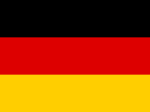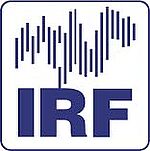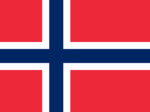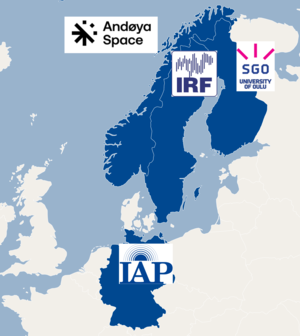Where we are
Research organizations and an SME, from four countries bring together their unique expertise in atmospheric measurements using radar and lidar remote sensing, sounding rockets, and models to address emerging challenges arising from the international use of the atmosphere up to the edge of space.
End-users have been (amongst others) identified in Norway, France, USA.
Who we are


The Leibniz Institute of Atmospheric Physics at the University of Rostock (IAP) conducts research in physics of the mesosphere and lower thermosphere and adjacent regions. The institute is located near the Baltic Sea resort Kühlungsborn, Germany. It operates a branch station at Juliusruh on the Rügen island, and it is a major partner of the ALOMAR observatory in northern Norway. IAP’s directorate reports to the Boards of Members and the Board of Trusties. It is advice by the Scientific Advisory Board. IAP’s scientific and experimental research is organised in three departments, namely “Optical Sounding and Sounding Rockets”, “Radar Remote Sensing”, and “Modelling of Atmospheric Processes”. The institute is supported by central facilities of Administration, Computing, Library, and Technical-Workshops. IAP is a member of the Leibniz Association. As an associated institute of the University of Rostock it forms an integral part of the teaching program at the Institute of Physics.Together with about 70 employees the institute has a clear approach to an equal opportunity and family-friendly human resource policy and is certified by the audit "berufundfamilie" ('career and family').
Participants: Dr. Gerd Baumgarten, Prof. Dr. Jorge L. Chau, Dr. Jens Fiedler, Dr. Ralph Latteck, Prof. Dr. Claudia Stolle


Finnish Academy of Science and Letters founded Sodankyla Geophysical Observatory in 1913 to conduct geophysical measurements and research based on observation data. On January 1, 1914, measurements of the Earth's magnetic field were initiated. The observatory became an independent research department of the University of Oulu on August 1, 1997. The Sodankyla Geophysical Observatory is situated at 67° 22′ N, 26° 38′ E, which is 130 kilometres north of Rovaniemi and seven kilometres south of Sodankyla, in the heart of Finnish Lapland on the picturesque banks of the Kitinen River. Continuous measurements are taken at the Sodankyla Geophysical Observatory of the Earth's magnetic field, cosmic radio noise, seismic activity, and cosmic rays. The observatory operates two ionospheric radars and actively participates in scientific and technological research concerning the EISCAT incoherent scatter radar system. The tomographic imaging of a 2-dimensional crosssection of the ionosphere from northern Norway to southern Finland is an innovative measurement. SGO conducts measurements at a total of 19 distinct locations, ranging from southern Finland to Svalbard.
Participants: Prof. Dr. Eija Tanskanen, Dr. Thomas Ulich


The Swedish Institute of Space Physics (IRF) is a governmental research institute under the Ministry of Education. IRF conducts basic research and postgraduate education in space physics, space technology and atmospheric physics. IRF has 60 years of experience in developing instruments for space research projects and participates in several major international collaborative projects using satellites and ground-based equipment. IRF’s areas of research areas provide knowledge that is necessary for understanding the natural world and the global processes that affect people in their daily lives. IRF contributes, for example, with research into processes in the polar atmosphere through observations and analysis of data focusing on the Arctic and Antarctica. IRF is an experienced and recognized research institute when it comes to developing instruments to send to planets in the solar system. The data the instruments send back to Earth will give the researchers work for many years to come. IRF has offices in Kiruna, Umeå, Uppsala and Lund. Head office is located in Kiruna.
Participants: Dr. Johan Kero


Andøya Space, formerly known as Andøya Space Center and as Andøya Rocket Range, is a Norwegian facility for the launch of research sounding rockets located on Andøya island (the northernmost in the Vesterlen archipelago) in Andøya Municipality, Nordland county, Norway. Over 1,200 sounding and sub-orbital rockets of Baumgarten/Ulich project plan 28 2022-10 various types have been launched from the site since 1962. Andøya Space is a civilian aksjeselskap (limited liability business) in which the Royal Norwegian Ministry of Trade and Industry has 90% of the shares and the Kongsberg Defence Systems corporation holds 10%. Andøya Space also operates a launcher for sounding rockets at Svalbard, known as SvalRak. The launch facilities at Andøya and Svalbard have served as hub for operations for both European Space Agency (ESA) and National Aeronautics and Space Administration (NASA) flights and research. Currently, Andøya Space is constructing a space port for the launch of small satellites from European soil.
Participants: Martin Flügge, Laura-Kristin Scholtz
Summary
High altitude weather patterns that shift as a result of climate change may reveal new hazards. The project's goal is to measure temperatures and winds near new Scandinavian spaceports up to the Edge of Space. These new findings will be examined in order to identify emerging and unexpected security threats.



